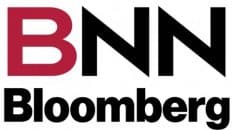The autumnal equinox is just around the corner. That’s when we have two moments in the year when the day and night are of equal length. Yes indeed, the end of summer and the start of fall. The first footsteps into winter.
As far as the fossil fuel side of the energy index is concerned, this is not the time to go into hibernation. In fact, it’s the opposite. The supply bear is grumpy and not ready for a long-term nap.
We are in the middle of a Bermuda triangle of demand for gasoline and diesel. Bobbing aimlessly with not a storm in sight. The price of West Texas Intermediate (WTI) crude is slumbering in and around the $85 to $87/bbl mark. After three years, the pandemic seems to have been wrestled to the ground. So don’t worry be happy for now.
But maybe not for too long. The crude oil price may well have reached its low point and have nowhere to go but up.
Why do I sound cautiously optimistic?
To a large extent, low crude prices have been artificially manipulated by U.S. President Joe Biden to ensure that the November midterms won’t be his… end of term in office.
So far, it’s working. President Biden’s approval ratings have gone from tarnished to glowing.
Tapping into the Strategic Petroleum Reserve (SPR) to boost commercial crude inventories and lower domestic prices has made the U.S. a one-man cartel. The reverse of OPEC.
But with things seeming to be under control on his political front, it is now rumoured that it is time to pay back the presidential piper and start refilling the SPR.
In other words, the crude oil loan that the administration has given the oil companies must now be repaid with oil company sourced crude. This will force crude inventories down and prices will go up, which will severely discourage exports of crude and all refined products.
The shortening of U.S. supply will be hard on the European community with winter on the way and sanctions on Russian supply clicking in on December 5th.
Topping up the SPR will not only quickly increase the WTI price from $85 to $100/bbl, but it will also be the end price of all distillates like diesel and heating oil.
The timing is bad as U.S. inventories of distillates remain stubbornly down 21% versus the 5-year average. With refinery runs in the U.S. northeast, where most of the heating oil is consumed, running at 97% capacity, there are no more refinery gears left.
There is no room for routine fall maintenance. There is no room for unplanned refinery shutdowns.
And there is no room for error.
Grab a coat because I can hear a long and expensive winter knocking at the door.
– Roger McKnight – B.Sc., Senior Petroleum Analyst








Add comment